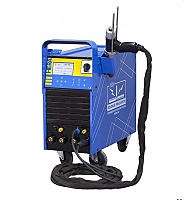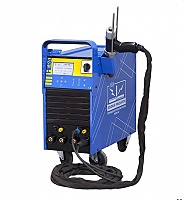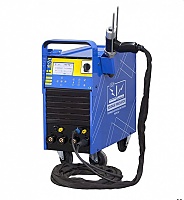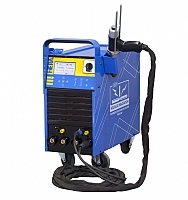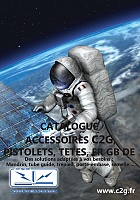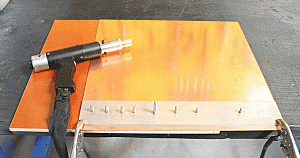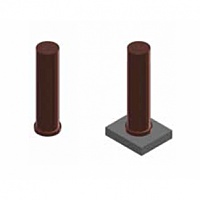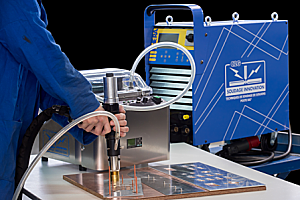Stud welding ATC
The ATC stud welding process is incorrectly called ARC. According to DIN EN ISO 14555, this process is one of the three welding processes together with the ARC and capacitor discharge (CED) processes. The short-time process is preferred for certain types of welding. This process is widely used in industry and is compatible with many machines and materials.
How does ATC stud welding work?
Unlike the ARC process, Short Arc Welding exposes the welding arc directly to the action of the air. A flange compensates for the drop in mechanical strength. This mechanical strength is due to the presence of air bubbles in the dilution zone. The electric current is higher than for the ARC process and the welding time is shorter.In practice, the stud is positioned on the surface of the workpiece to be welded. A first arc initiates the melting process, followed by a second arc with a higher current to melt the material to be welded. The stud is then immersed in the molten material. This method produces a weld of perfect quality and excellent strength.
What applications does the ATC welding process have?
This process is particularly suitable for applications limited to low carbon or low alloy steels, such as welding a steel sheet to a stainless steel stud.In fine sheet metal work, for example, it is also possible to weld studs up to 16 mm in diameter with a ceramic or gas ferrule. In this case, a neutral gas should be used in order to achieve the highest quality weld.
What equipment is used for ATC welding?
C2G Innovation has a number of generators that can be used for ATC stud welding. For example, machines such as the HERA 1000 allow short-time arc welding of studs with a diameter of 1 to 10 millimetres. The delay time is 0.007 to 0.1 seconds.Inverter technology in this modular power source improves the reproducibility of ATC welds. The other generators in the HERA range also allow short time.
Several types of studs can be used for this ATC process such as flanged, threaded or plain studs. The studs can be made of steel, brass, aluminium or stainless steel.

